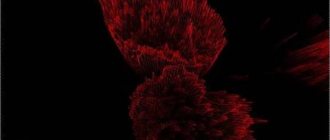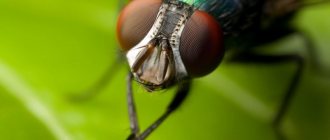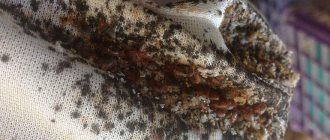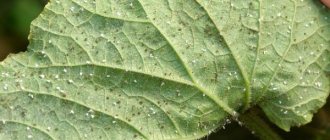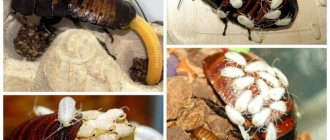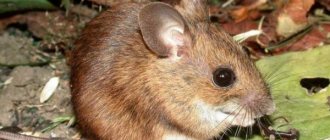- Wild animals
- >>
- Insects
the wasp . It is a bright, unusual insect in black and yellow coloration with a small but painful sting. Most people consider this animal dangerous and even aggressive. However, only one species of wasp is such. The remaining representatives prefer to live away from humans, rarely show aggression, and are very surprising with their habits.
Origin of the species and description
Photo: Osa
Wasps do not have a clear scientific definition. This is the customary name for all stinging stalked-bellied insects from the order Hymenoptera, which do not belong to bees or ants. Today there is a huge variety of different wasps. Insects of this type include the following wasps: road wasps, glitter wasps, sand wasps, skolia wasps, paper wasps, flower wasps, hornets, burrowing wasps, and many others.
All of them are conventionally divided into two categories:
- Singles;
- Public.
Interesting fact: Unlike bees, wasps can defend themselves not only with the help of a sting. If their existence is threatened, insects can use the jaw apparatus. Their bite is quite sensitive.
The solitary wasp leads a solitary life and builds an unusual nest. All adults are capable of reproduction. If nests are built, then in very secluded corners: on walls, on a tree, in the soil. And only a small number of species prefer to live without nests. They rest in natural holes in the wood.
Social wasps prefer to live in families. Their nests are built by the queen. Not all adults are capable of reproduction. Sometimes a colony can number several thousand wasps, but only one of them can reproduce. Infertile wasps are called workers, fertile ones are called queens.
Interesting fact: Most Hymenoptera can transition from a solitary to a social lifestyle. This transition takes place in several stages.
Habitat
All wasps are divided into two groups - social and solitary. Their habitat differs depending on their lifestyle.
Social individuals live in nests and hives. They choose their habitat depending on how much material there is nearby for building a home. Insects also try to settle in places where there is a lot of food.
The hive can be formed in the crown of trees or thickets of bushes. Some species build homes in dense grass or in the ground. They also choose human dwellings for nests. Wasps can settle on the balcony, attic, and also on the roof of the house. They often choose barns and garages for hives.
Solitary individuals, unlike social ones, do not have a permanent place of residence. They spend the night in the grass and on flowers. To stay on the plant, insects cling to it with their jaws or paws. At dawn, single birds fly to a new place.
Appearance and features
Photo: Insect wasp
The wasp is a bright, interesting insect. It has a very characteristic color - yellow and black stripes. The adult size is average - up to ten centimeters. Only females can reach eighteen centimeters in length. The body of this animal has many small hairs. There is a sting at its end. It is short, very smooth, and easily penetrates the victim. The sting has the ability to move, so the wasp can bite from almost any position.
Video: Wasp
The wasp has eyes of a complex structure. They are large and can distinguish objects at 180C. Three eyes are located on the top of the head. They are difficult to notice right away. Near these eyes there are antennae. The functions of the antennae depend on the activity of the animal and the specific situation. Usually this part of the body serves as a reference point for flight. With their help, the wasp can accurately determine the direction of the wind, the depth of the gap and much more.
Interesting fact: The sting of representatives of the wasp species does not have serrations. Unlike bees, these animals are not injured when stung.
Wasps is a collective name. There are many types of wasps, and their external characteristics vary slightly.
Let's look at a brief external description of the most common types:
- Paper. They look the most familiar. They settle near humans and are black and yellow in color;
- Spangled wasps. They have average sizes - up to eight centimeters. The color of the body is unusual - pearlescent, pink or turquoise;
- Floral. They are tiny in size. They do not grow more than one centimeter. The predominant color is yellow;
- German wasps. They have an unusual body color – bright orange. Males of this species are black and orange and have black wings. Females do not have wings and are often called velvet ants.
What types of wasps are there?
Insects are divided into several families. The most common wasp species are:
- paper;
- floral;
- hornets;
- shiny;
- road;
- German;
- scolias;
- Typhia;
- riders.
Each insect has differences not only in body structure, but also in lifestyle, nutrition and toxicity of the poison.
A large wasp-like insect with a long body, read more in this article.
Paper wasps
The most common subfamily of wasps in Russia is called paper wasps. 30 species of these insects live in temperate latitudes. Their appearance is familiar to everyone - a yellow-black body, a black head and short antennae. These wasps were called paper wasps because of the unusual structure of the nest. The walls of the hive are quite thin and resemble sheets of paper.
Insects unite in a large swarm. They build a nest in spring and summer. During the first month of summer, pests lay eggs. The diet of larvae differs from that of adults. The cubs feed on small insects that the swarm brings for them. Adult wasps only attack other species; they themselves do not eat protein foods. Insects drink nectar and juice from fruits.
The larva goes through several stages of development, including the period of pupation and adulthood. The whole process takes about 20 days. Therefore, most insects appear in sight in mid-summer.
Wasps protect their nest from possible dangers. A person who happens to be near the hive will be stung. If he does not leave the area, the entire swarm of wasps may arrive. In autumn, paper species leave the nest. Most individuals die before next spring. Young females spend the winter and continue the race with the onset of late spring.
Flower wasps
This type of insect belongs to the subfamily Foldoptera. Individuals are also called mazarins. Flower wasps settle alone and do not create a swarm.
The size of these insects is no more than 1 cm. Their black body is covered not with stripes, like paper wasps, but with yellow spots. Pests' feet are bright yellow.
Wasps feed on flower pollen and settle near a food source. To procreate, each female creates a nest, which consists of one cell. They build nests not only in trees, but also on the ground. Mazarins combine clay and sand with a special sticky secretion. After the wasp places the egg in the cell, it seals it with a sufficient amount of flower nectar.
Mazarins live for several years. They love hot climates. In Russia, the insect can be found in the southern part of the country.
Hornets
These pests are similar to individuals of other subfamilies with a “wasp waist” and transparent wings. But at the same time, the hornet is several times larger than other wasps. Depending on the variety, the size of the insect can be from 2 to 30 cm. There is also a difference in color. The hornet's body contains not only yellow and black colors, but also brown and orange.
There are 23 species of this subfamily. The common hornet lives in mid-latitudes. Insects are social and live in colonies. The nest of these pests contains about 500 larvae and is a structure of several horizontal rows of honeycombs. Hornets build their homes by chewing wood fibers.
The most dangerous species for humans is the Asian or giant hornet. They live in colonies and are very aggressive in defending their homes. Giant hornets live in Japan and China.
Insects feed on plants with a lot of sugar. These include ripe fruits, tree sap, flower nectar and honey. Hornet larvae eat other insects. In order to feed their offspring, adults kill flies, horseflies, bees, gadflies and grasshoppers. Hornets also kill other species of wasps.
Shiny wasps
Sparkles are distinguished by a relatively small body. The length of an adult is no more than 1.5 cm. Also, the color of these insects is not similar to other species. The black shell shimmers with a violet-green tint, reminiscent of a metal coating.
The body of shiny wasps has a concave shape. Due to this feature, pests can curl up into a ball when in danger. In some species, the sting has no function. Individuals scare away enemies with their bright colors. But there are also stinging species of shiny wasps.
This is interesting: A species of wasp called “beautiful shiners” parasitizes other insects. He lays eggs in the body of a spider that has been paralyzed by the pelopea. When the beautiful shiner larva hatches, it eats the pelopea and then the spider itself.
Males and females of this insect species differ in body structure. The abdomen of males consists of five segments. In females, one part changes to a tubular-shaped ovipositor.
Road wasps
The subfamily belongs to a single type. Road wasps are medium in size. They do not exceed 4 cm in length. The color of the insects is similar to the subfamily Foldoptera. The black shell is covered with yellow or red spots.
For more information about the type of wild black wasp, the danger to humans and methods of disposal, read this article.
This species of wasp has long hind legs. Each limb has a small appendage with which the insect can loosen the ground. Road species do not create nests in trees. They always choose burrows in the soil as their habitat. Wasps rarely fly and prefer to move on the ground.
Insect venom is very toxic. Their bite is quite painful. Road wasps are nicknamed killer wasps due to their aggressive nature. These are predatory insects that prey on arachnids. The road wasp can kill a tarantula with one blow of its poisonous sting. After the spider dies, the insect drags it into the hole and lays eggs in the body of the prey.
German wasps
The second name of this subfamily is velvet ants. These include more than 4 thousand species. They live in deserts and steppes. Male and female German wasps are very different from each other.
The male is larger than the female. The maximum size of a wasp is 3 cm. Males have wings. They can be either completely black or with red spots in the sternum area.
Female velvet ants do not have wings. It is because of this feature that they received their name. The body of insects is covered with hairs and resembles velvet fabric. The sternum is bright red. The top of the abdomen is black with yellow splashes, the bottom has black and yellow stripes.
A squad of velvet ants takes over other people's hives. Insects settle in the nests of bumblebees and road wasps. The larvae feed on the eggs of other species that are in the hive. After the young individual escapes from the cell, it feeds on flower nectar and insect corpses.
The venom of the German wasp is toxic. If it bites a person, a painful swelling will form.
Scolia
The insects are as large in size as hornets. Scolia can reach 6 cm in length. They thrive in tropical climates, but sometimes adapt to northern regions. Scolia have a black and yellow coloration, but the wings are different from other individuals. They have a light brown tint with a purple sheen.
Scolia poison is dangerous for humans only if there is individual intolerance. But the reaction to a bite can be frightening. From the toxin, the limb affected by the poison begins to go numb.
Unlike other species, the female Scolia is larger in size than the male. Insects feed on the nectar of flowers. Scolia's offspring are carnivorous. The venom of adults paralyzes the nervous system of the larvae. Scolia sting the victim in the abdomen, immobilizing it. They feed their offspring with rhinoceros beetle larvae and hunt bronze beetles and beetles. The wasp lays eggs in the body of an immobilized victim. After this, the larva hatches and devours it from the inside.
For more information about the giant wasp, the dangers of a bite, its consequences and first aid, read the article here.
Typhia
The subfamily includes about 50 species of wasps. Their size varies from 0.5 to 1.3 cm. Most individuals are black. There are species of insects with ebony shells and thin yellow stripes. The limbs of males and females are different. The paws of males are brown, females are burgundy.
A distinctive feature of typhus is a unique defensive reaction. When attacked, the wasp curls up into a ball.
Insects live in places where there are many pest beetles. They feed on the sticky secretions of aphids. Typhias attach eggs to the shells of beetles and bread beetles. Over time, larvae emerge from them, which gnaw through the shell of the insect and feed on it. Typhia pupates inside the chitinous covering of the beetle. The young individual emerges from the cocoon only the next year.
Typhias are often found in gardens and orchards. They can be seen on umbrella plants. Thanks to this type of wasp, the population of pests that destroy crops is reduced.
Where does the wasp live?
Photo: Animal wasp
Representatives of wasps are widespread throughout the world. They can easily be found in Belarus, Russia, Ukraine, Europe, Africa, Argentina, Canada, Mexico, Australia, China, Japan. Such animals do not live only in the hot Sahara, the Arctic and the Arabian Peninsula. Wasps prefer a temperate climate and cannot exist in regions that are too hot or too frosty.
Interesting fact: A very dangerous species of wasp lives in Japan and China - the Asian hornet. Its size can reach six centimeters. One bite of such an insect is quite enough to kill a person, especially if he is allergic. According to statistics, up to fifty people die every year from the sting of the Asian hornet in these countries.
Most representatives of wasps live in the Northern Hemisphere. Only a small population can be found in Brazil. These insects choose their habitat according to several criteria: temperate climate, presence of trees, humans. The thing is that the human habitat makes it easier for wasps to get their food. The tree is used for building nests and raising larvae. Some individuals build homes from clay and pebbles. Their nests look very much like small castles.
Anatomy of a wasp
Wasps belong to the Hymenoptera, which are the most numerous group of insects, including about 155 thousand species.
A peculiarity of the body structure of these insects is that between the abdomen and the breast there is a thin membrane in the form of a stalk, which contributed to the emergence of such a thing as a “wasp waist”. The body of an insect consists of 3 parts - head, chest and abdomen. Despite the fact that all species differ in body color, colors such as black, yellow and orange are always present. The structural feature of the wings can also be attributed to the distinctive feature of these insects. As a rule, the wings are quite thin and transparent, with clearly visible veins. The hind wings are somewhat shorter than the fore wings. They can shimmer in different colors, but can also be completely colorless. Each wasp leg consists of 5 segments. They perform various functions, including digging.
On the insect's head you can see whiskers of various shapes and lengths. The whiskers also perform various functions, including allowing the insect to navigate in space. The eyes are clearly expressed. Although the jaws do not have teeth, they are powerful enough to bite through the chitinous layer of the insect.
The wasp, like the bee, has a sting, which is located on the underside of the abdomen. As a rule, only females can sting. The sting is quite thin and is connected to a gland that produces poison of varying toxicity. With the help of poison, the wasp protects itself, its young, its nest, and so on.
Interesting fact! Males and females differ in size. As a rule, females are always larger than males. Females of some species of wasps reach a length of about 5.5 cm. These insects belong to the Scolia species and inhabit warm countries with a tropical climate. Some of the species can also be found on our territory.
In the photographs below you can take a closer look at what wasps look like. Wasp larvae are very different in appearance from adult individuals, since they are not pure white caterpillars. These are predatory caterpillars that feed on protein foods.
What does a wasp eat?
Photo: Osa
The diet of representatives of the wasp species is quite varied. It depends on several factors: type of animal, stage of development, habitat. It may seem that these insects are not at all selective in food. They can eat sweets, fish, fruit, berries and even candy. However, this is not the main food of wasps, but only a pleasant addition to the diet.
Most species prefer soft, liquid food. They feed on the pulp of a variety of fruits, plant juice, berries and nectars. If the opportunity arises, the wasp will not mind eating a little jam, honey or sweet drink. Wasps have a very developed sense of smell. Therefore, they can easily find fermented or rotten fruits. They are also attracted by the pungent smell of beer and kvass. Wasps bring part of their prey to their offspring, the queen. This is what the workers do.
Predator wasps have a slightly different diet. They mainly eat insects: beetles, flies, cockroaches, small spiders. This is what they feed their offspring. The hunting process of a predator wasp is quite interesting. First she looks out for a potential victim, then suddenly attacks. The hymenoptera insect tries to insert its sting into its prey as quickly as possible in order to paralyze it. The poison helps keep the meat fresh.
Are the bites of real wasps dangerous?
At the site of the wasp sting, pain, redness and itching occur, nausea, urticaria, and allergic swelling may occur. People with a severe allergy to wasp stings experience characteristic symptoms: difficulty swallowing, wheezing, slurred speech, shortness of breath, weakness and dizziness. Multiple wasp stings can be fatal.
Basically, wasps bite in defense of themselves or the nest - this is worth remembering when trying to approach the hive or destroy it.
Features of character and lifestyle
Photo: Bumblebee Wasp
The lifestyle of this animal depends on the species. The life of solitary wasps can be called monotonous. They are actively engaged in preparing reserves for offspring. To do this, they place the paralyzed prey in the nest so that the larvae can feed on it. Further, the offspring will develop independently, without the help of their parents.
Social wasps live more interesting lives. In the spring, the queen looks for a place to create a “house”. There she lays eggs. When the larvae appear, the queen takes care of them. The first brood grows up over time and relieves its parent of worries. They take on all the responsibilities for obtaining food and building a house. The queen continues to increase the number of colonies.
There is an opinion that stinging insects spend the night sleeping. But that's not true! These animals never sleep. With the onset of darkness, their natural activity simply decreases. Wasps prefer to spend their nights in their nests, chewing bark. When morning comes, the adults begin building new honeycombs.
Interesting fact: The lifespan of males usually does not exceed two weeks. Male wasps die soon after mating.
The character of most representatives of this species is very bad. Wasps are not the first to attack without doing anything, but they will definitely sting if you disturb them even a little. In this case, the smell of the secreted poison can be smelled by relatives of the insect. Then the person or animal who disturbed the wasp will be in big trouble. Wasps can band together and face danger together.
Features of reproduction
In social representatives, the eggs are laid by the female. She is fertilized by the male once in the fall and hibernates in the winter. With the arrival of spring, it builds a nest and lays eggs in cells. She can lay up to 300 eggs per day, from which larvae soon emerge. Then they transform into pupae, and those into an adult insect. At the same time, worker wasps bring food for the female and larvae. The queen does not care about the offspring, she only lays eggs.
Reproduction of single wasps occurs as a result of mating. The female builds a home, brings insects that are paralyzed by poison, and lays eggs on their abdomen. Then she seals the nest, and the larvae eat the stored food. Over time, the wasps grow, leave the nest and fly away to look for a new place.
Social structure and reproduction
Photo: Insect wasp
In winter, adults are constantly in shelter. To do this, they find a secluded place for themselves in advance. With the onset of spring, with the first warmth, the queen flies out in search of a suitable place to build a nest. The nest is necessary so that the female can lay eggs there and raise her offspring. Tree bark, clay, stones and other natural materials are used for construction.
The first eggs hatch into sterile individuals. They will continue to build a home and bring food for the queen's future offspring. Only at the end of summer do offspring appear that are capable of reproducing their own kind. It is this that will mate in the future. After fertilization, the females will look for a place for a warm winter, and the males will soon die a natural death.
One female wasp can reproduce about two thousand individuals. Most of them will be infertile. The uterus seals the laid eggs in a special chamber. She also places small insects there. The larvae will feed on these insects in the future and soon turn into adults. The larvae, which will be able to reproduce in the future, have a completely different diet. They are fed food that promotes the development of sexual organs. The queen lives for about ten months, while sterile wasps only live for four weeks.
The largest wasp in the world
Lawn fertilizer: description, types of fertilizing
The size of the wasps varies widely: from 1 cm for the small flower wasp to 6 cm for the Asian giant scolius.
The spotted wasp Scolia is considered the beauty among the largest representatives of the Hymenoptera. The body size of the largest wasp is 32 mm for the male and 55 mm for the female.
Insects lead a solitary, primitive way of life. Scolia, with its impressive dimensions, is harmless to humans, although the bite can cause the hand to go numb.
The hornet from Asia is a giant copy of the European representative, but without a brownish tint in color: the body is up to 50 mm long, the amplitude of the wings reaches 60 mm. The named hornet wasp has a terrifying appearance. In common parlance, the hornet is called a sparrow-bee.
Natural enemies of wasps
Photo: Wasp animal
Wasps, especially social species, are collective animals. Together they can hold the defense when attacked by the enemy.
However, even wasp colonies have natural enemies:
- Some types of birds. Only certain species of birds dare to attack stinging insects. In particular, European honey buzzards prey on wasps. They catch them in flight and immediately tear off the sting. The carcass is then given to its chicks. Bee-eaters are not averse to eating wasps. They easily catch them, crush them and quickly swallow them. At the same time, they themselves never receive any damage;
- Small parasites. They start right in wasp nests. Small ticks, “riders”, feed on young animals that still live in the honeycombs. Such parasites can go unnoticed by adults for a very long time. They significantly reduce the number of young animals;
- Wild animals. Wasps need to be wary of hedgehogs, bears, and other medium and large wild predators. However, most animals that have been bitten by this insect at least once try to avoid it in the future;
- People. If a wasp colony settles near a house, in a barn or in an attic, it will almost always die. People, on their own or with the help of specialists, try to get rid of the nest and wasps using various means and poison.
Basic characteristics of the wasp
The insect belongs to the Hymenoptera family. A characteristic feature of individuals is the presence of a so-called “wasp waist”. The abdomen and sternum are connected by a small thin plate.
The body consists of three parts:
- heads;
- sternum;
- abdomen
The wings consist of two sections. The front is always larger than the back. The wings are thin and transparent, with translucent veins. In some individuals, they shimmer in the sun and acquire a purple tint.
There is a sting at the bottom of the abdomen. It looks like a thin needle. The sting connects to a special gland that produces poison. Depending on the type of wasp, the toxicity of the released substance also varies.
Individuals use the sting in several cases:
- to protect the nest;
- in self-defense;
- to immobilize the enemy.
The paws consist of five parts. Antennae are used to navigate in space. They pick up any sounds and also react to smell. Most wasps are yellow-black or orange-black in color.
This is interesting! Wasps can change the length of their body. Thanks to this, they easily bend and sting the victim. The needle enters at any angle.
The jaws are covered with chitin. This is a very hard substance. Wasps are dangerous to other species, as they are able to bite through the shell of their enemies.
Population and species status
Photo: Osa
Wasps are a necessary, useful and significant part of the fauna. Yes, they do not produce tasty honey like bees and even harm beekeeping. However, in other areas of life and in nature, they perform a very useful task - they destroy various pests. They catch small insects and feed them to their offspring. This has a beneficial effect on plants. Garden and vegetable plantings do not suffer from the paws of pests.
For example, wasps can help completely get rid of a pest such as a mole cricket. If there is a mole cricket in the area, it is enough to attract wasps with the help of flower plants. Ground wasps will very quickly “restore order” to the area. Wasps can also be used to combat borers and leaf beetles. The following species feed on these pests: wall, paper, big-headed, big-nosed. They can significantly reduce the number of harmful insects. This is the best way to combat them without using chemicals.
Representatives of the wasp species are numerous. They are common in many countries, multiply quickly, and are able to protect themselves. Therefore, the species is not threatened by the process of extinction or extinction. However, it is impossible to track the wasp population with great accuracy. These are small insects that often settle in hard-to-reach places. For this reason, accurate population data does not exist.
Pests and enemies
Although insects have a sting, they are still often attacked by other insects, mammals and birds. Therefore, even they cannot fully protect themselves.
The most common enemies are:
- Ants. They eat weak and sick individuals.
- Fan beetle. It settles in the burrow of earthen species and lays eggs on the body of young wasps.
- Hornets. They are considered killer wasps. They are quite large and capable of ruining a family in one attack.
- Buzzard birds. They feed their chicks with larvae and adults.
- Bears, wolverines, hedgehogs. They calmly eat wasps, as they are not afraid of their bites.
The main threat to wasps is the reduction of suitable habitats. Deforestation and plowing of fields lead to the extinction of some species, so many countries carry out special environmental measures aimed at protecting them.
The main nuisance of wasps is their painful sting , which can lead to allergic reactions and anaphylactic shock, and the advantage is the protection of agricultural land from harmful insects that can destroy crops.
This is interesting: what to do if you are bitten by a wasp.




